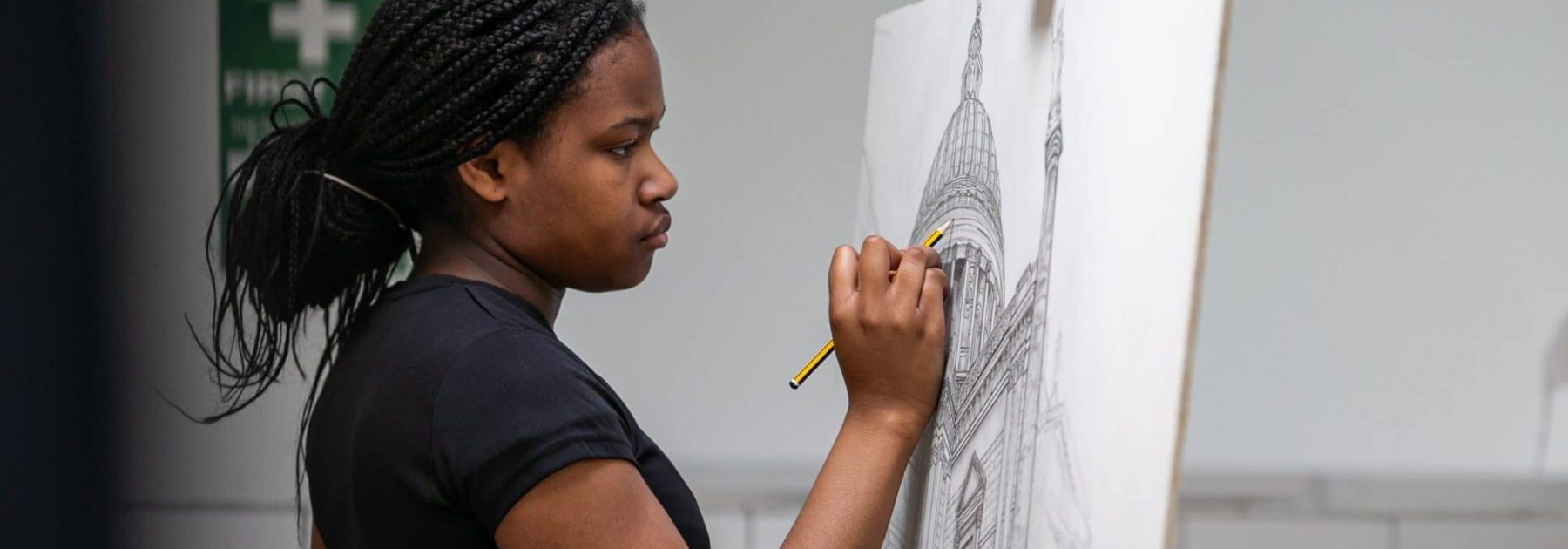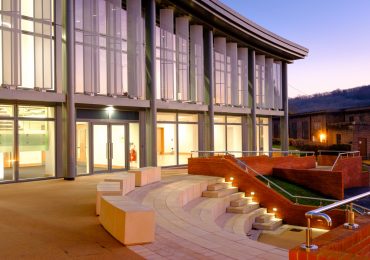Fine Art A Level
CLICK HERE TO RETURN TO SIXTH FORM OPEN EVENING SUBJECT INFO MASTER PAGE
Art: Fine Art
A Level Exam Board: Eduqas
AS Level Exam Board: Eduqas
Creativity is cited as one of the top three skills promoted by the World Economic Forum as essential for a young person entering the careers market in the next decade. The foundation of all creativity is enabling a student to realise their own ideas stemming from a divergent range of possible solutions.
At the core of an Art A Level is the development of a student’s creative excellence to prepare them for 21st century opportunities.
Entrance requirements:
Students should have completed an Art, Design (3D or Graphics) or Media GCSE and have achieved at least a grade 7.
Art: Fine Art is an academic option which can complement a range of other A Levels adding breadth as well as the important opportunity to self-direct their own creative process with teacher mentoring and to develop independent critical thinking skills which are increasingly sought after in industry.
Career opportunities:
It is an essential qualification for University courses in Architecture, Art and Design courses in all their variety (399 art and design related options are available through UCAS). There is a wealth of possible careers available proven by the fact that 1 in 11 adults in the UK (1 in 8 in London) are employed within the creative industries.
Structure of course:
Art: Fine Art is a two-year linear course but there is the added flexibility that students can submit their Lower Sixth coursework to the exam board and complete an AS Level if they are considering not continuing to the full A Level. AS does not involve a practical timed or written exam.
The AS and A Level courses involve both practical work and critical studies. Students of Fine Art develop their ideas through a variety of media and processes. Students look at related works of artists, designers and architects to inform their ideas and approaches to making their own responses. Additional life drawing classes develop the students’ skills and confidence in drawing. Other opportunities such as trips to galleries and artist-led workshops can occur during the course.
Students are introduced to a broad range of processes and are encouraged to explore these fully. The Art studios offer opportunities for students to work in drawing and painting, sculpture, ceramics, print making (screen, etching and sublimation). We also have a set of PCs for developing in our students the skills of Adobe Suite (Photoshop and Illustrator). Pursuing Digital Art is now firmly part of this course.
The opportunities within Art at Caterham are broad and students are provided with the skills through one-to-one tutorials and workshops to really develop their individual interests through processes of their choice beyond the initial diagnostic phase.
In the Lower Sixth students will complete an induction period in which they will be taught a number of core skills as part of a self-directed project in response to a theme. They will also study the History of Art for two terms in one of their double periods each week to lay the foundations for their Personal Investigation which they embark on after Easter of the Lower Sixth. Part of the Personal Investigation requires a 3000 word visual essay in response to a self-directed theme. The Personal Investigation is worth 60% of the A Level and continues to be developed until the end of January in the Upper Sixth through practical work and outcomes. This is followed by an externally set assignment worth 40% of the A Level which begins in February of the Upper Sixth and ends with a timed examination in the Summer Term. The year is rounded off with an exhibition celebrating their work.
Whilst all materials will be provided, there may be charges for some unusual or specialist materials that a student wishes to use for an expensive bespoke outcome.




